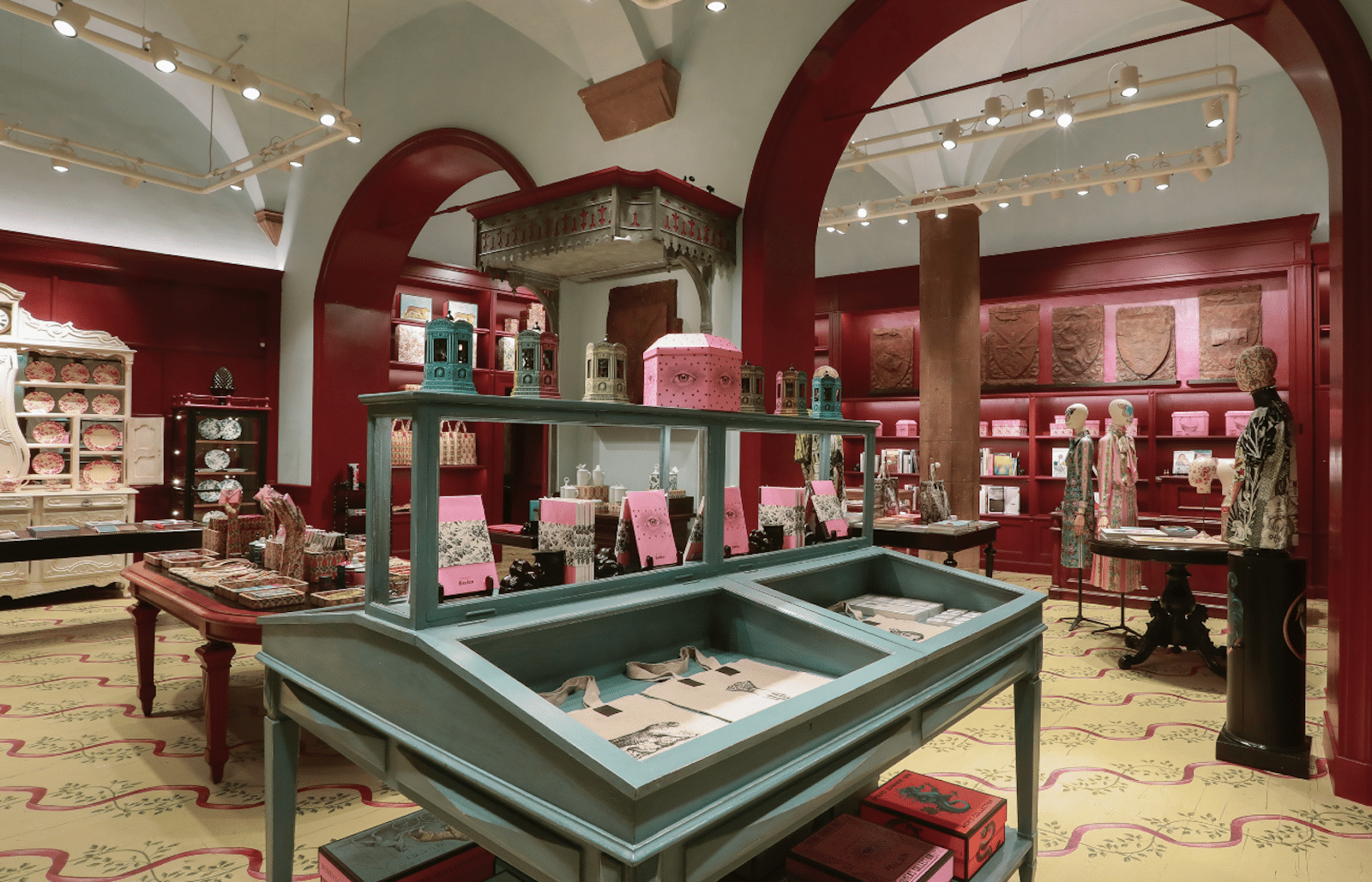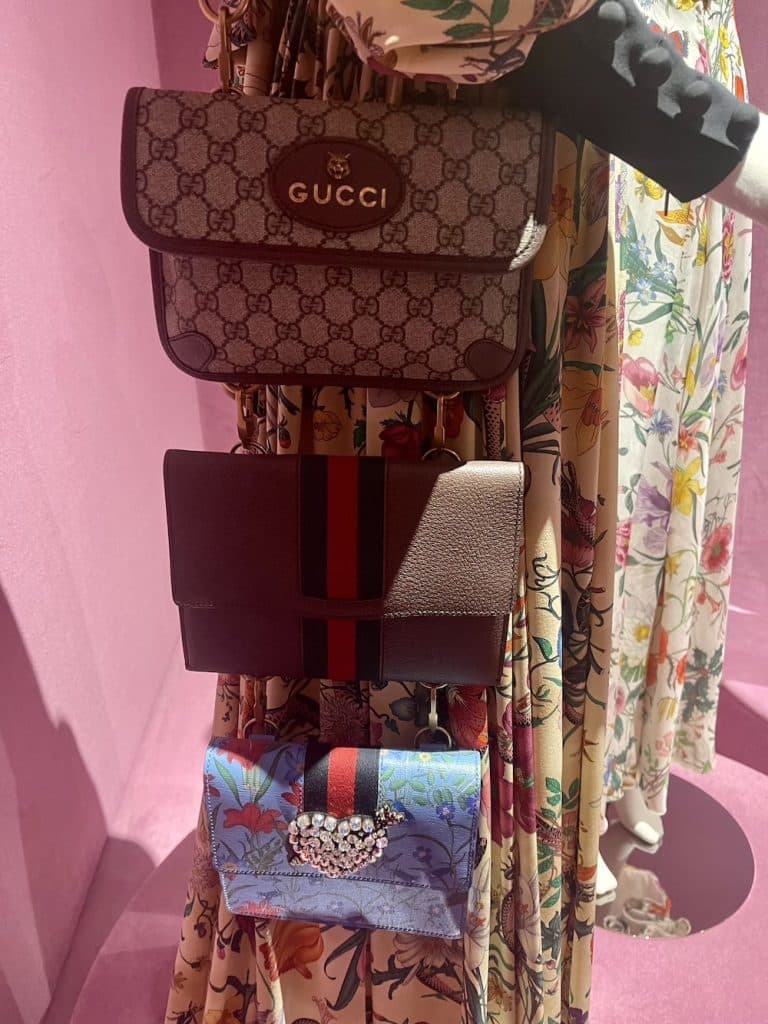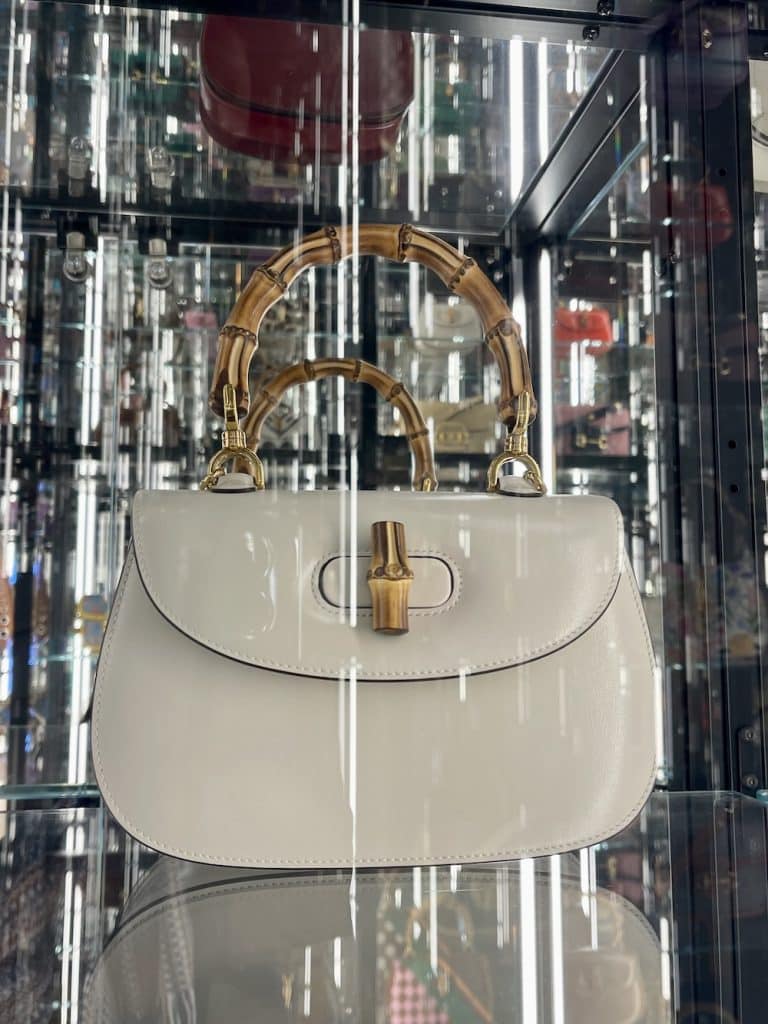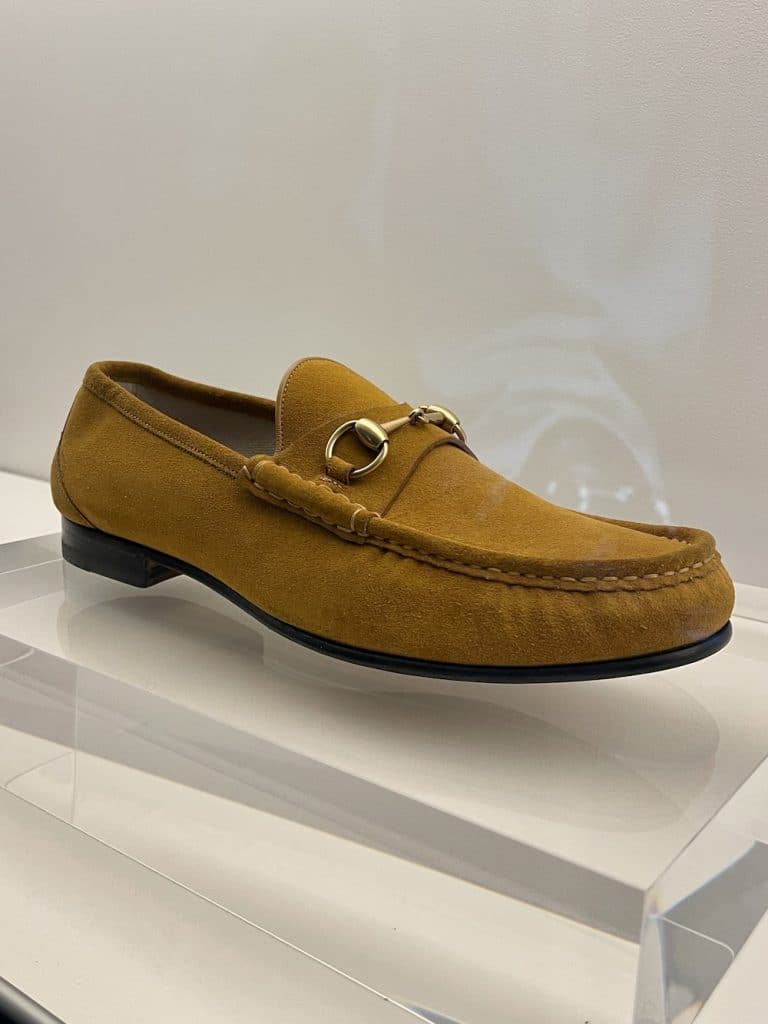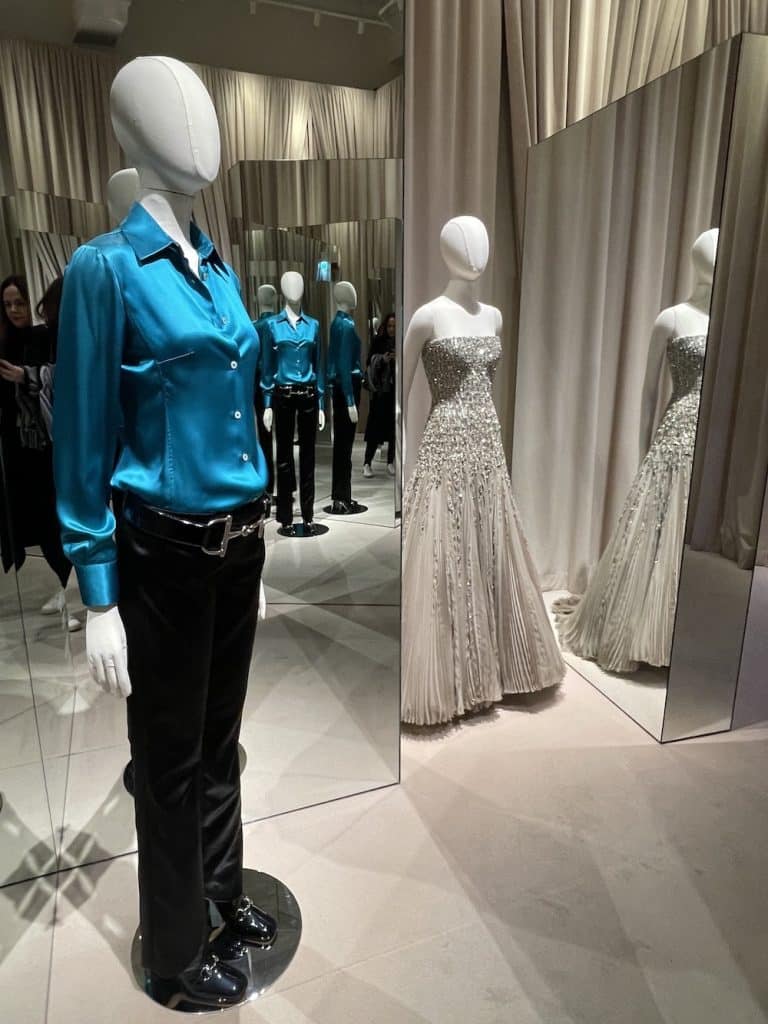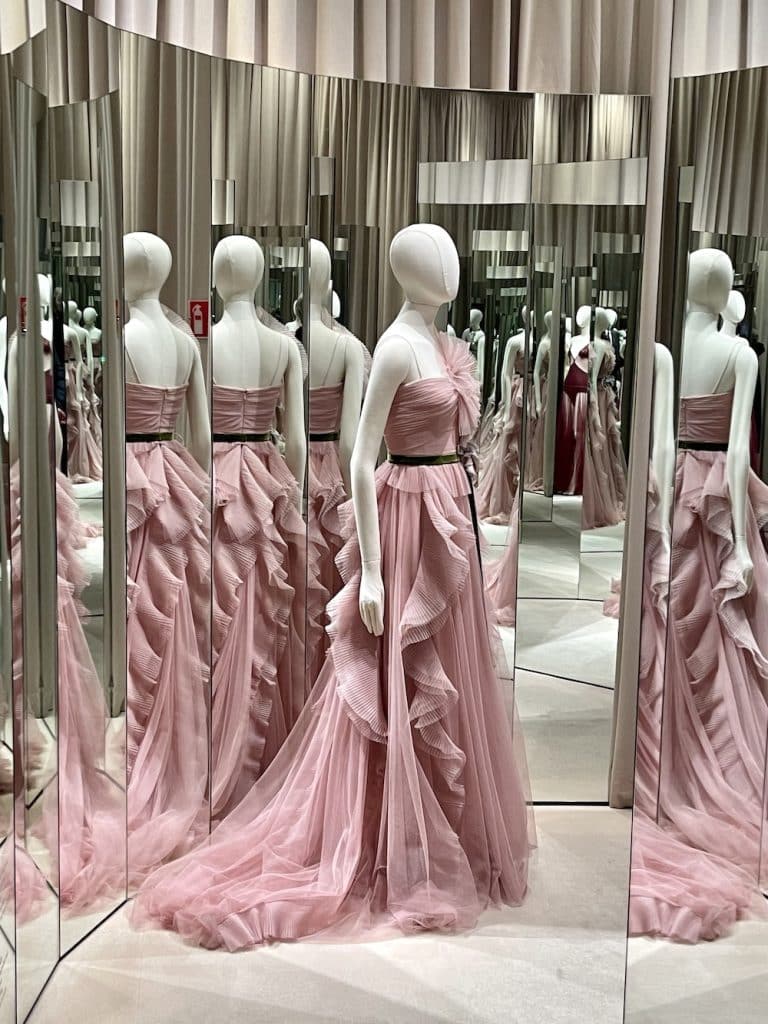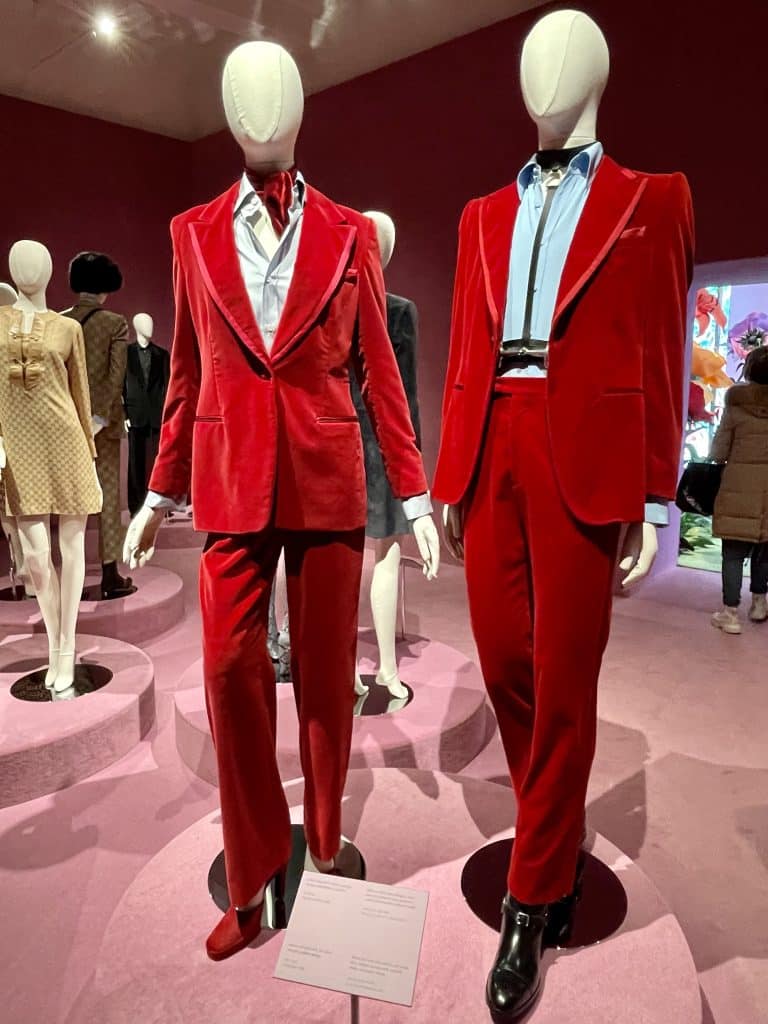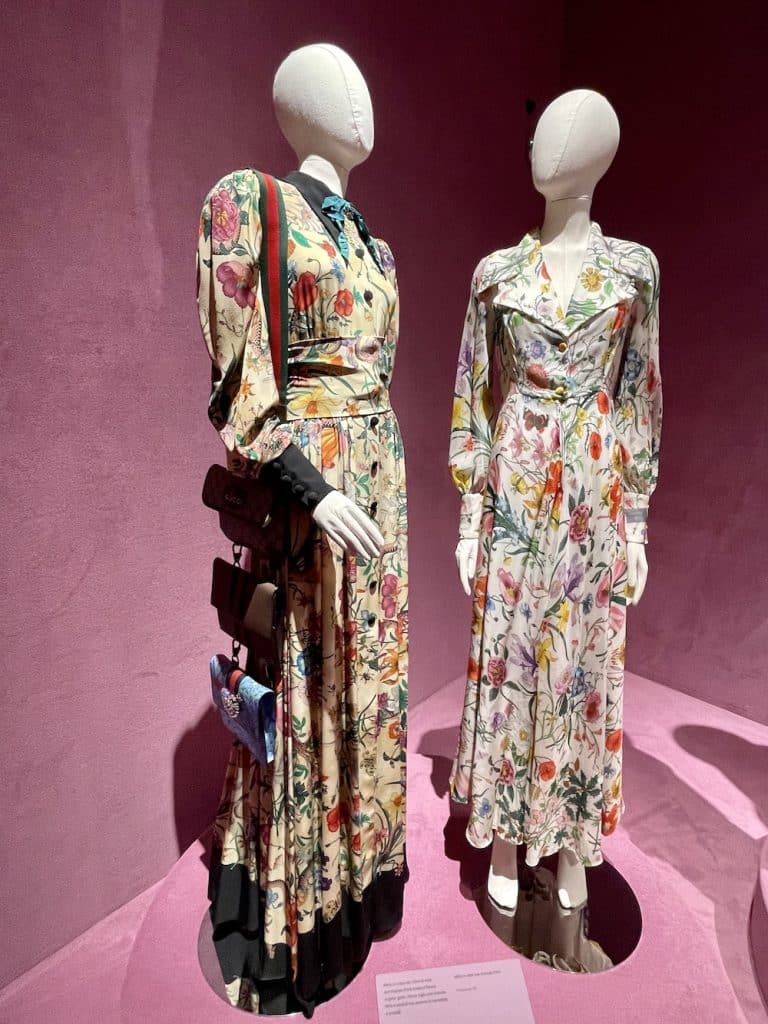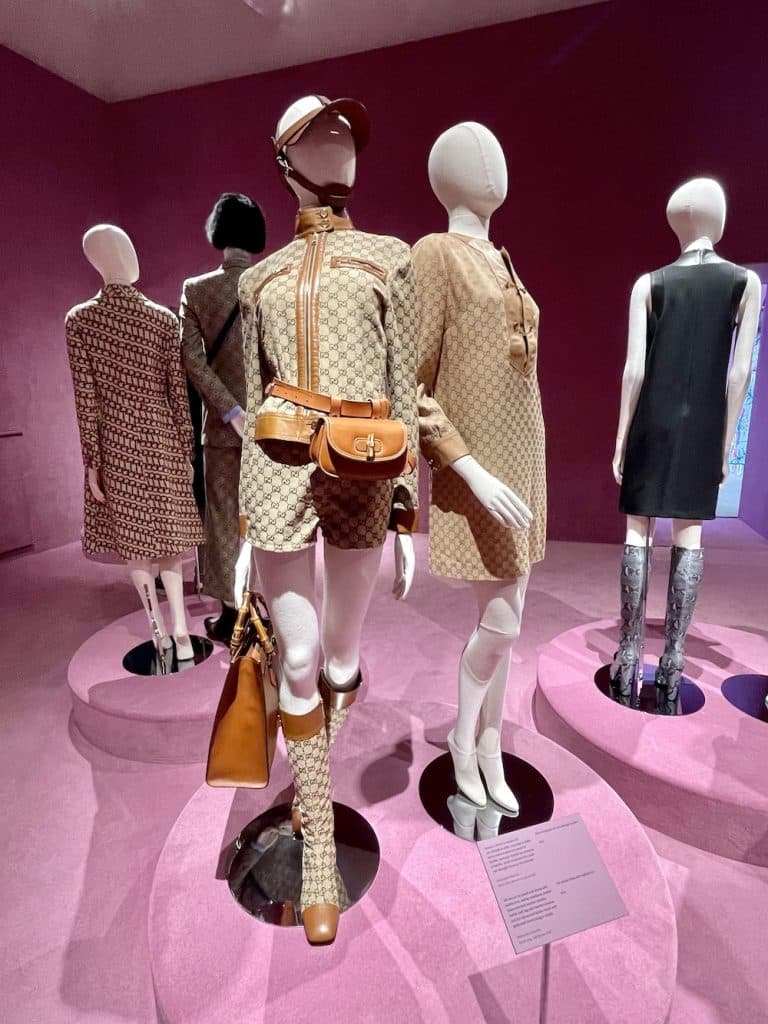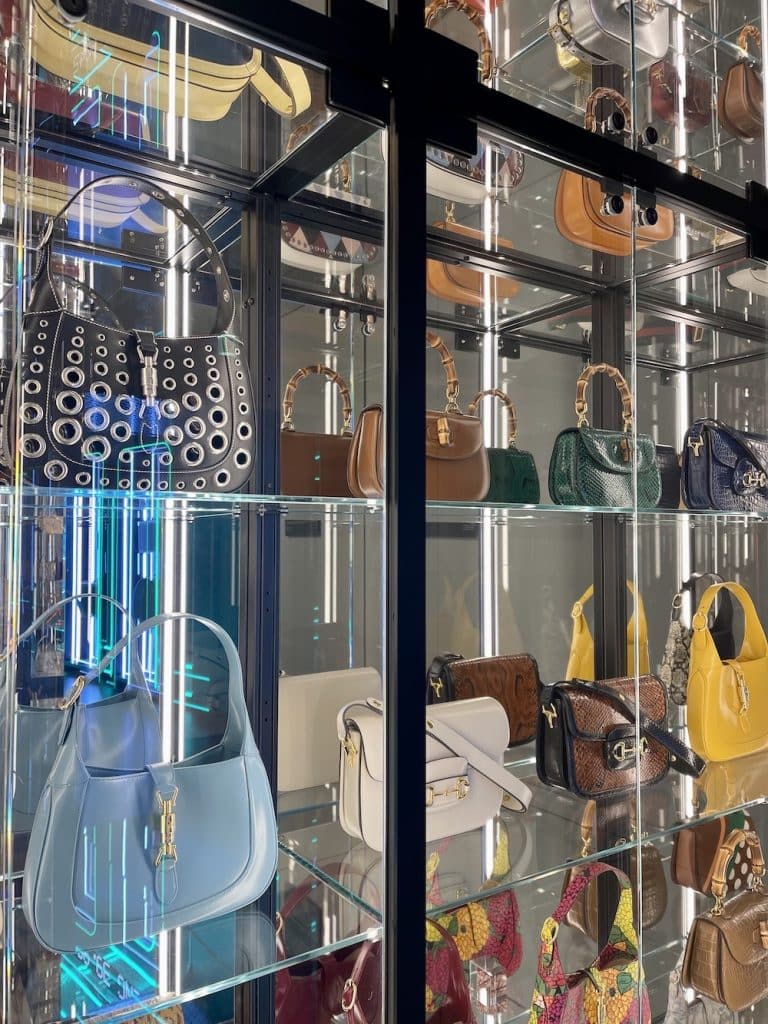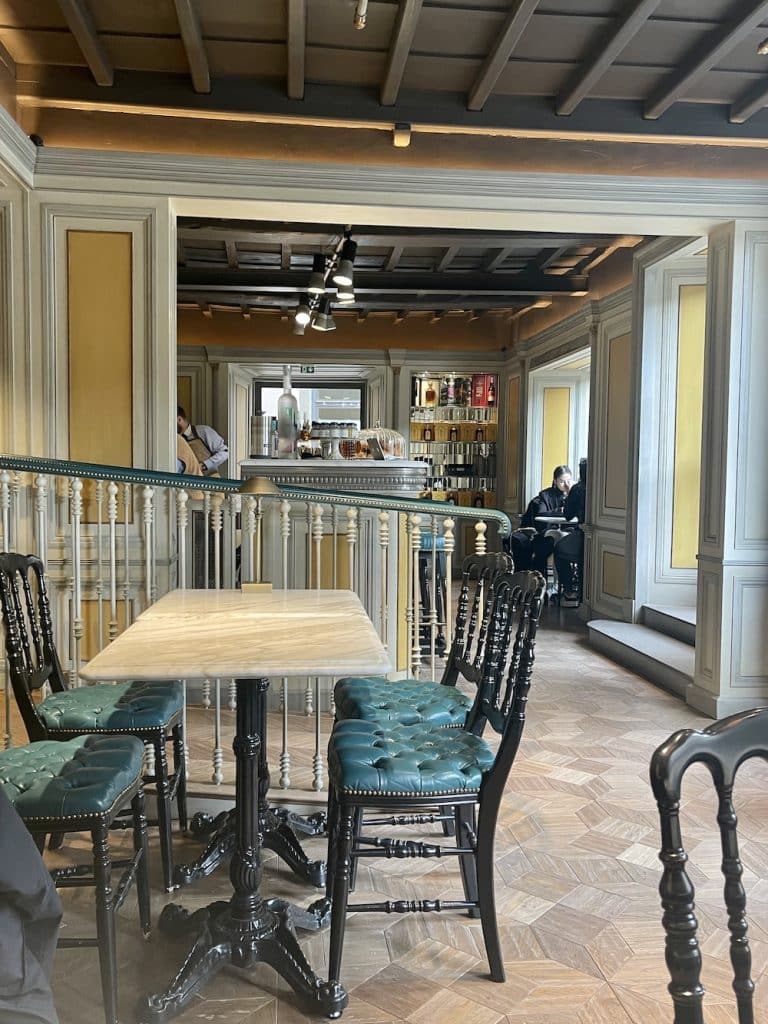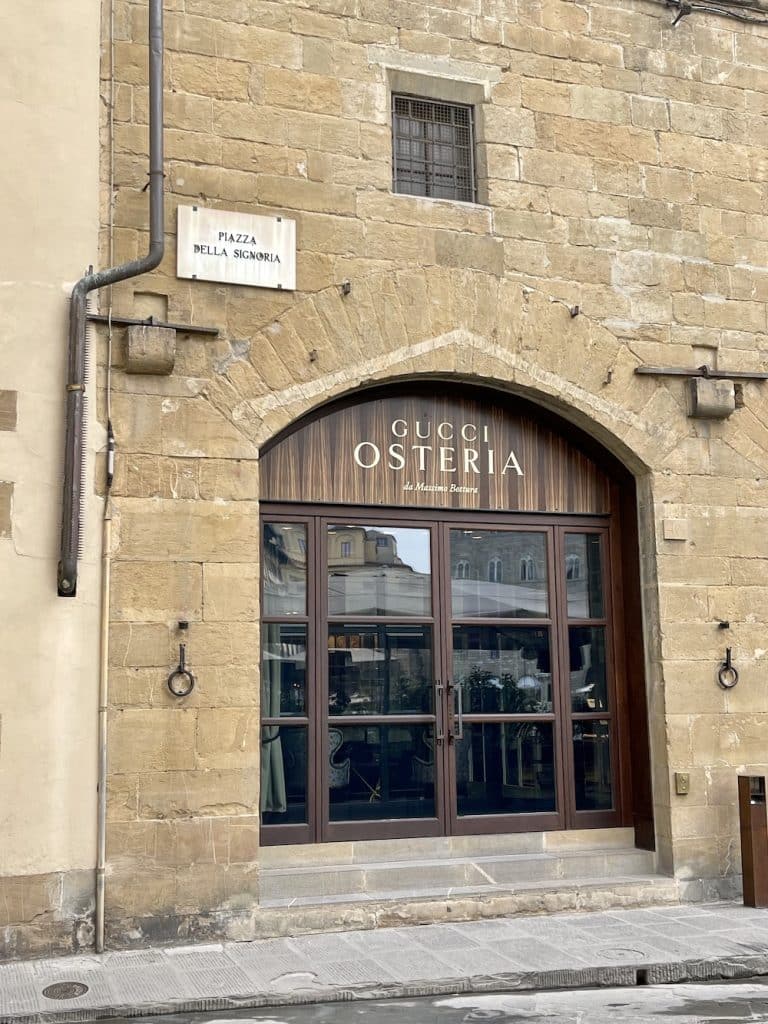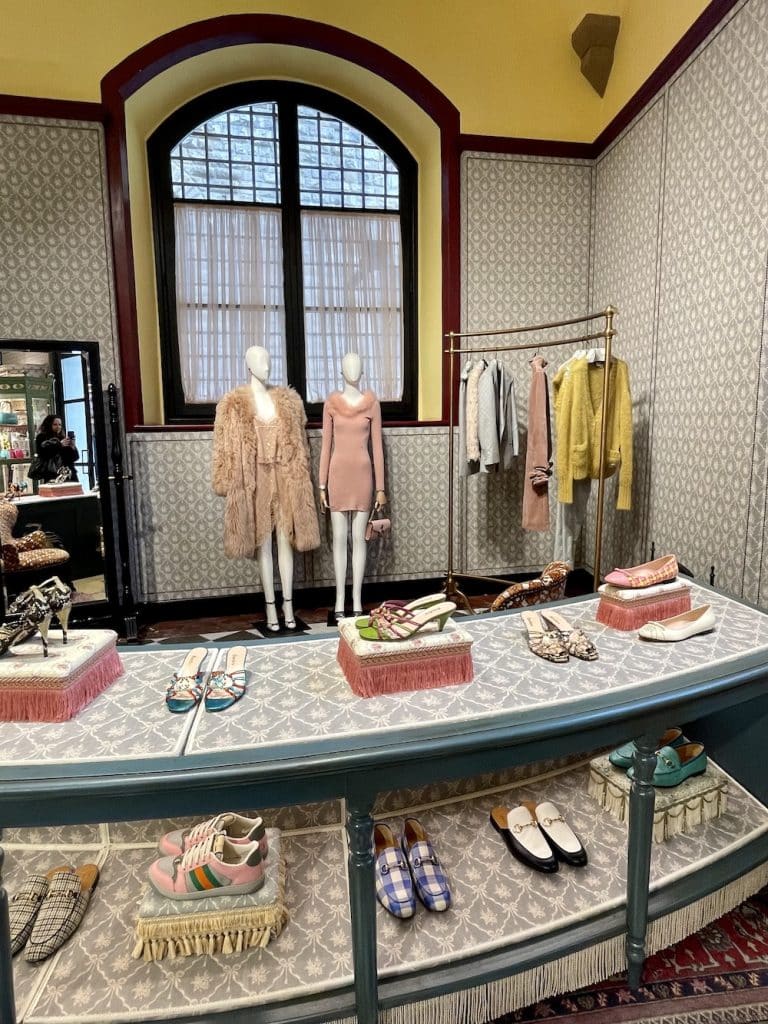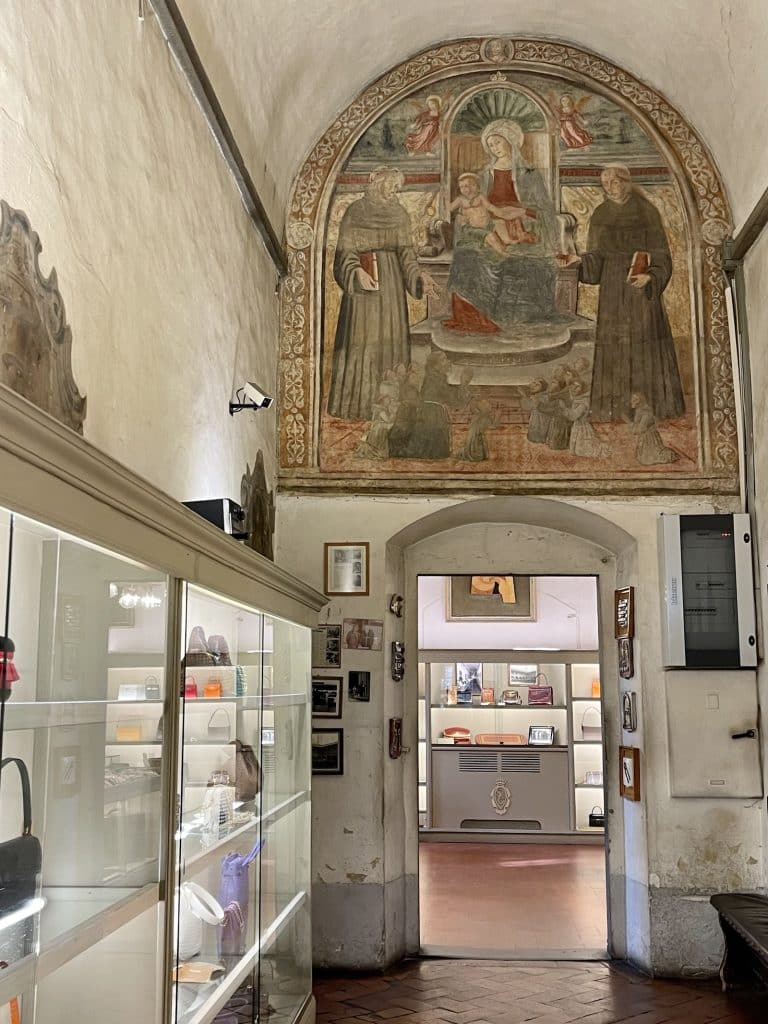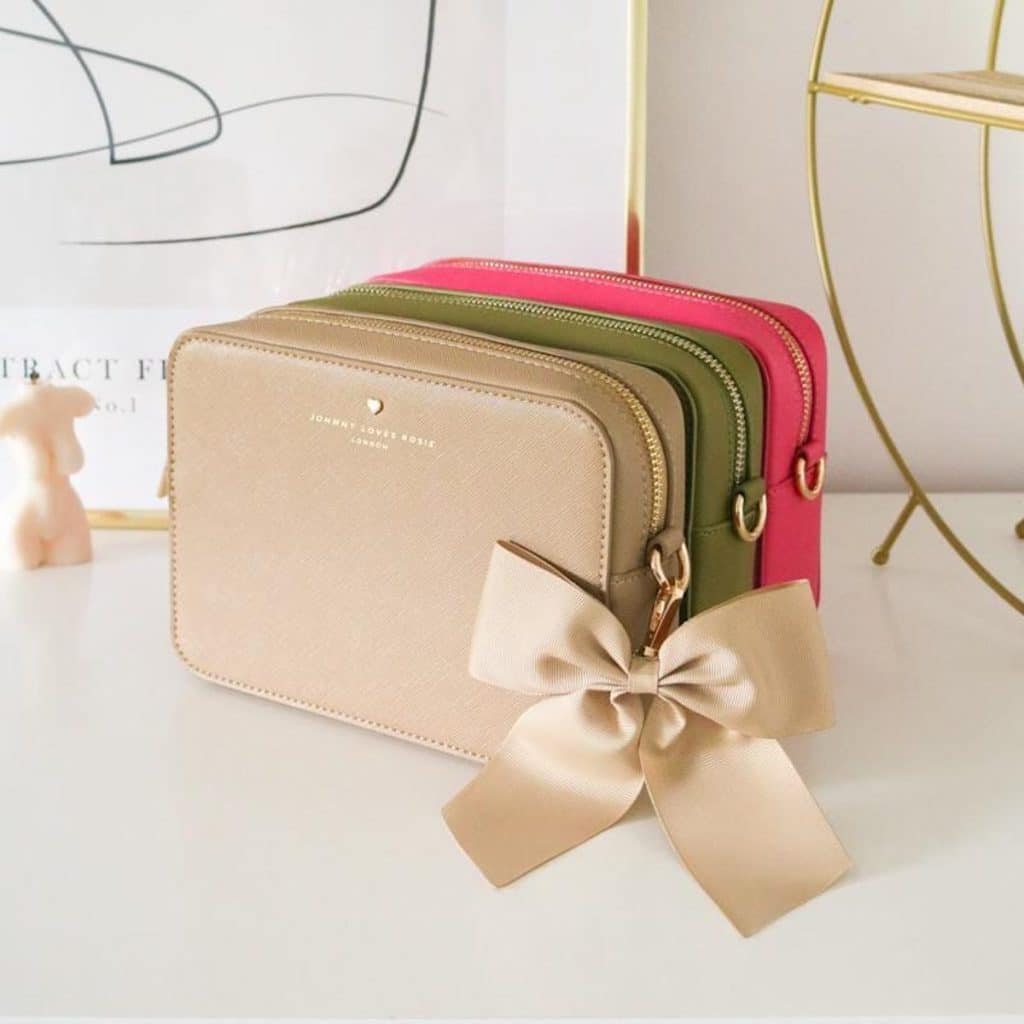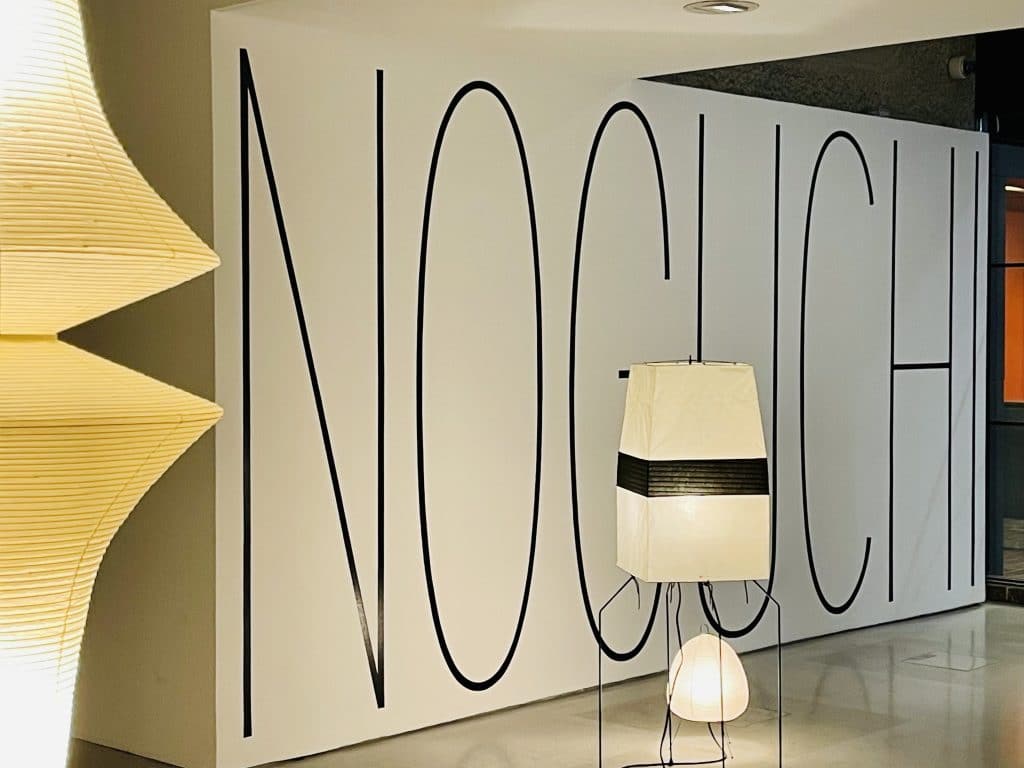No visit to Florence is complete without a wander through Gucci Garden, situated in Piazza della Signoria, which comprises a museum, the Gucci store, a bookshop and the Gucci Osteria. Created in 2011, it was the brainchild of Alessandro Michele, Gucci’s current creative director. Florence is, after all, the spiritual home of Gucci where the company was originally founded in 1921 by Guccio Gucci.
As a young man, Guccio had worked as a bellhop at the Savoy hotel in London. There he would load/unload the luggage of the hotel’s wealthy clients, learning about their tastes in fashion, quality and fabrics. Upon his return to Florence, Guccio bought his own shop on Via della Vigna Nuova where he sold imported leather luggage. At the same time, he also opened a small workshop to have his own leather goods made by local craftsmen. Eventually, a larger workshop had to be acquired to house Gucci’s sixty artisans. In 1935, the invasion of Ethiopia by Mussolini led the League of Nations to impose a trade embargo on Italy. Leather became scarce, pushing Guccio Gucci to introduce other fabrics in the composition of his products, such as raffia, wicker, wood, linen, and jute. The rhombus motif, as a Gucci signature, was created. In 1937, Gucci launched its handbags.
Aldo, the son of Gucci, became increasingly involved in the family company since he started working there in 1925. He convinced his father to grow by opening a new shop in Rome in 1938 at 21 Via Condotti. There, Gucci launched more accessories in the form of gloves, belts wallets and keychains. During World War II, the Gucci artisans made the boots for Italian infantry. After the war, the Gucci crest, a shield and armoured knight, surrounded by a ribbon inscribed with the family name, became synonymous with the city of Florence.
Post war, Guccio Gucci also distributed the shares of the company to his three sons (Aldo, Vasco and Rodolfo). In 1947, Gucci launched the Bamboo bag. The brand launched its first global tagline: Quality is remembered long after price is forgotten.
The iconic moccasins (Gucci loafer) were launched in 1952.
Guccio Gucci died in January 1953 and the family feud which was well documented in the Ridley Scott film, House of Gucci, ensued, but not before Gucci enjoyed massive growth and was endorsed by many Hollywood stars. John F. Kennedy was a huge fan of their loafers, and the iconic Flora silk scarf was designed in 1966 for actress, Grace Kelly.
There have been many incarnations of the Gucci brand over the years but in 1994 when Tom Ford was hired to oversee the women’s ready-t0-wear collection, becoming creative director of Gucci, the brand practically exploded. Gucci’s advertising budget rose from $6 million in 1993 to $70 million in 1997.
There is a three-story chronological structure to the museum that highlights the evolution of Gucci’s fashion since its creation. Here you can see suitcases from the 1930s, bold floral prints from the 1950s, and there is also a section of the museum dedicated to Tom Ford.
Gucci florals now and then.
There is also a spectacular display of Gucci bags on display, housed in towering glass and mirrored cabinets.
To the left of the Gucci Garden’s main building is the plush Gucci Osteria, coloured in warm and cool green tones where you can sample fare from master chef, Massimo Bottura, holder of three Michelin Stars. Or you can just simply order a cappuccino or Aperol Spritz in the cafe.
The Gucci store is exquisitely presented and contains all the latest fashions, including items that you cannot purchase in any other store in the world so definitely a must do for all Gucci aficionados!
Continuing the floral theme, we also made sure to buy a bottle of our favourite Gucci Bloom perfume.
For further information and opening hours, please visit: www.gucci.com
CELLOPHANELAND* were guests of Gucci Garden.




